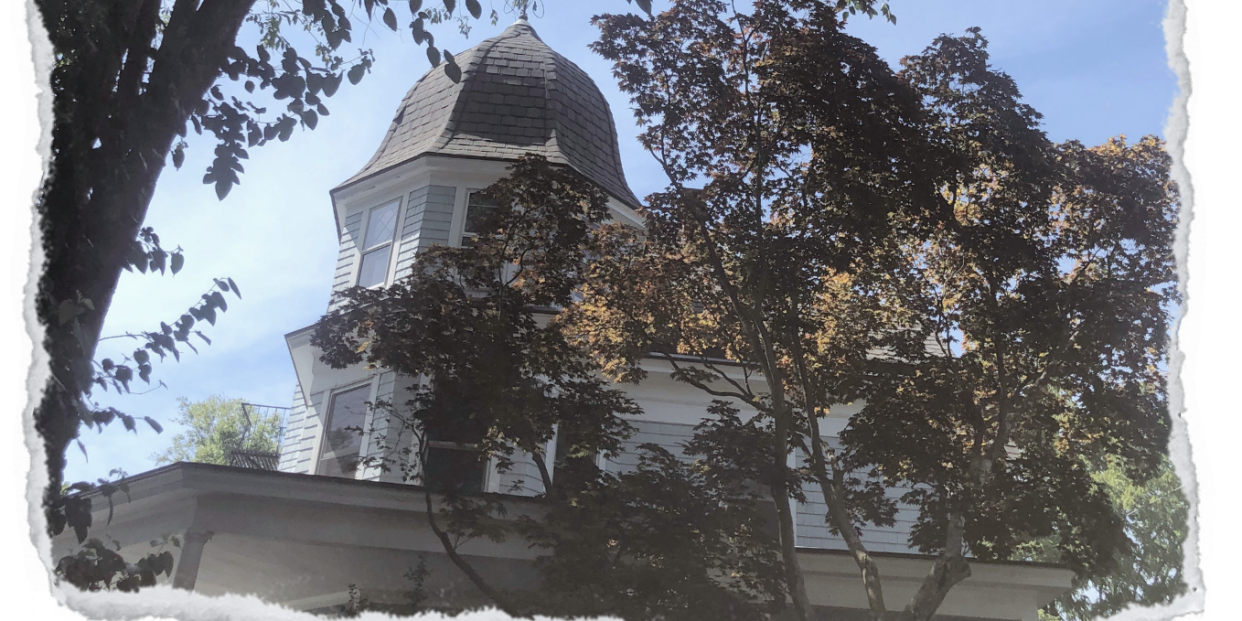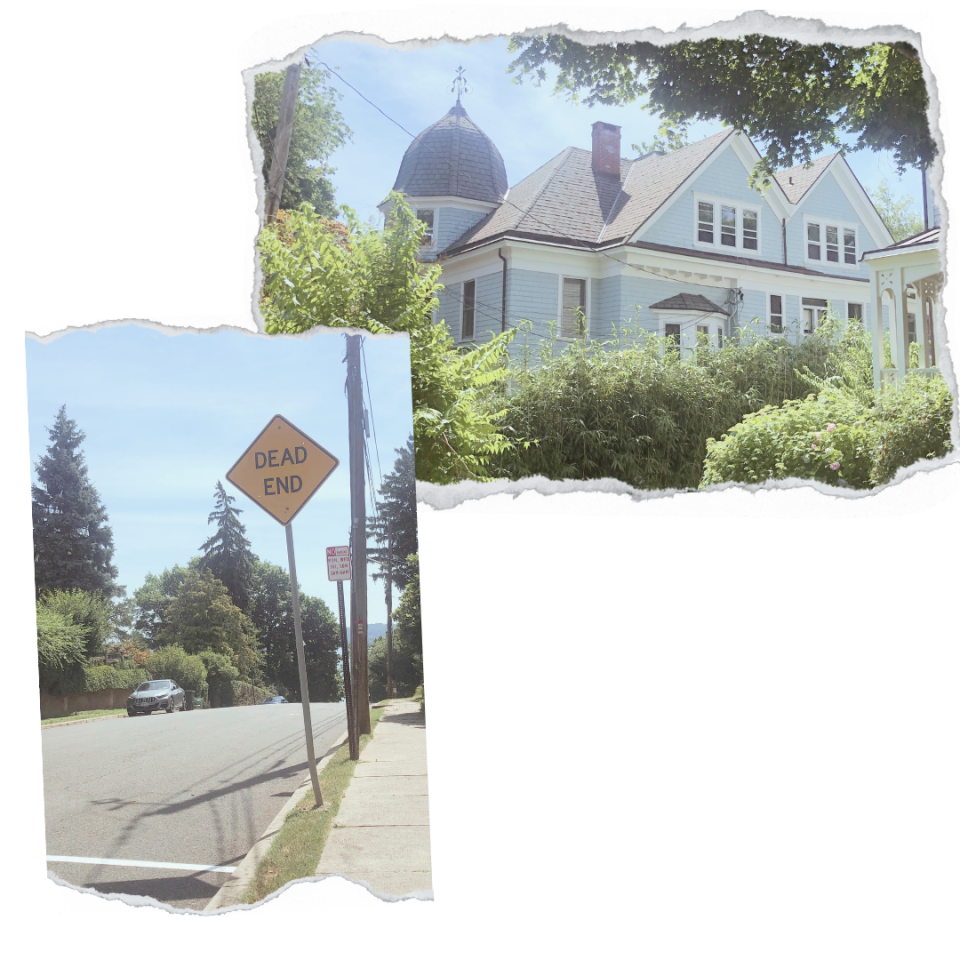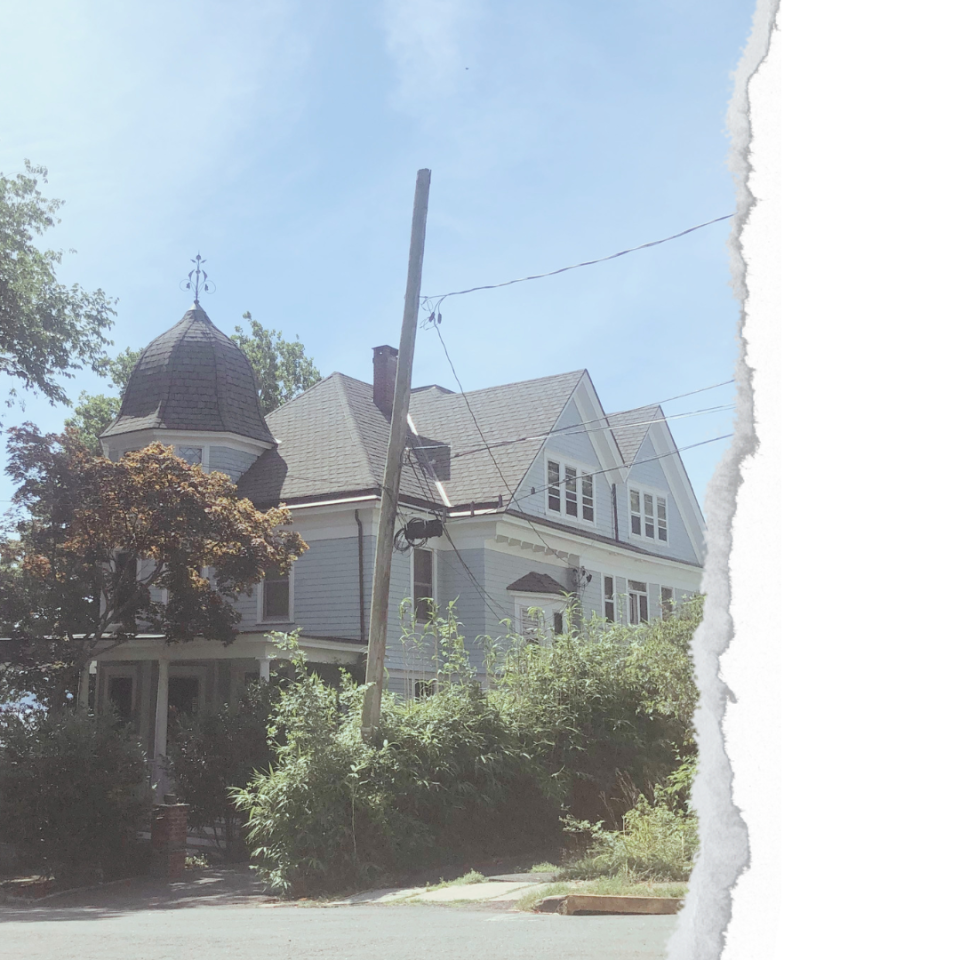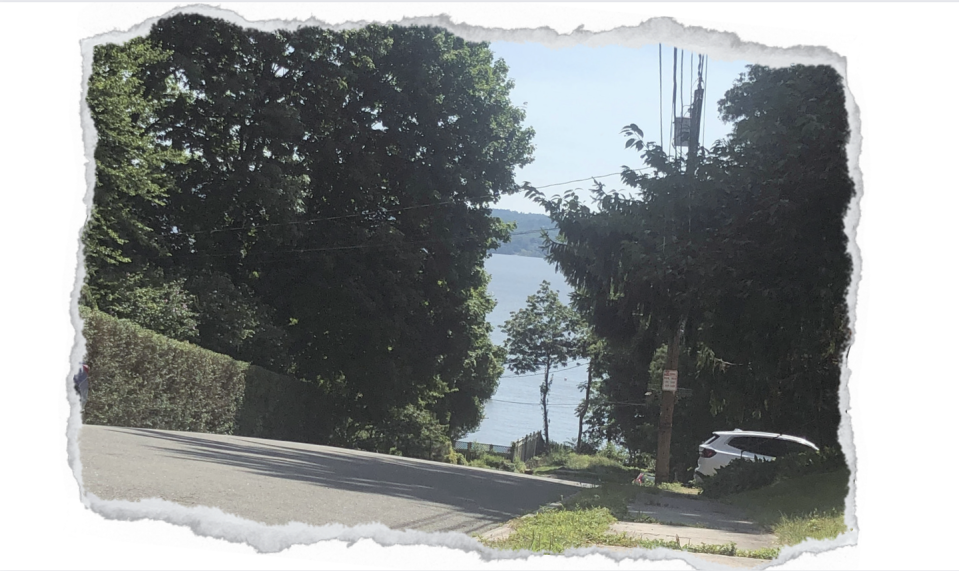How This New York Home Became America's First Legally Haunted House

"Hearst Magazines and Yahoo may earn commission or revenue on some items through the links below."
The full story of the Ackley House is featured in season 2, episode 2 of House Beautiful’s haunted house podcast, Dark House. Listen to the episode here.
Haunted houses, ghost stories, and paranormal activity—usually, these subjects are relegated to legend or lore. But there's at least one instance of such a subjective (not to mention difficult to prove) topic finding a lasting place in the legal canon. The first house to be declared legally haunted in the United States is a short ten-minute drive across the Tappan Zee bridge over the Hudson River from Sleepy Hollow—the birthplace of the Legend of the Headless Horsemen by Rip Van Winkle.
The house in question, the Ackley House, is located at 1 LaVeta Place in Nyack, New York, and is one party in the seminal trial Stambovsky v. Ackley, colloquially referred to as "The Ghostbusters Ruling."
INSERT PODCAST PLAYER HERE
The fact that a home was ever deemed "legally haunted" is surprising—the fact that it's right near Sleepy Hollow (and that it's a Victorian), may be less so. Is there something about the region that makes it particularly susceptible to otherworldly visitors, or is it just a coincidence? And just how haunted does a house have to be for a court to recognize it? Read on for our investigation.
1 LaVeta Place and the Ackley Family Lore
LaVeta Place is an especially coveted cul-de-sac in the commuter town of Nyack. Built in 1890, the three-story clapboard Victorian at number 1 is constructed of horizontal wood paneling. It's set back behind a front lawn and elevated above the river with gorgeous views of it from almost every room and window. It features a charming turret, a picturesque wraparound porch, and a fenced-in pool. Inside, there are eight bedrooms and four and a half bathrooms. But despite the spaciousness, the home was designed to feel homey and comforting, with nooks and intimate, smaller spaces carved out of larger rooms throughout. Some of the period details include stained glass windows, hardwood floors, and elaborate moldings. Little is known about the early occupants, though, according to interviews with local residents, it was likely home to a family that is still in the area until it went unoccupied for about a decade in the 1960s. So what went so wrong?
Fortunately, 1 LaVeta isn’t the site of any highly publicized murders or tragedies. Instead, the rumors of ghosts can be traced back to a mid-1970s Reader's Digest article called “Our Haunted House on the Hudson” written by resident Helen Ackley, wife to George Ackley, and mother of four now adult children. In it, she wrote about the family's many ghostly roommates while they lived (happily!) in the home.

Both parents experienced some hauntings: Most notably, George swears he saw a pair of disembodied moccasin-clad feet walk by him from the hallway above the staircase he was standing in while Helen witnessed a man emerge in Colonial or Revolutionary war attire while she was repainting the entryway. Daughter Cynthia, who was in high school at the time, was awakened daily by something shaking her bed until she politely asked the room to let her sleep in. What may sound alarming to most was actually welcomed by the Ackleys; they felt as if all the spirits were friendly, so they grew to consider them part of the family. But even before they moved in, neighborhood children believed the house was haunted, saying, "lady, you know you just bought a haunted house, right?" when Helen first arrived.
Fast forward to 1989, about 25 years after the Ackleys moved into 1 LaVeta Place and 15 years after the article was printed, solidifying its haunted reputation, and Helen was ready to downsize. So, she decided to list the house with Richard Ellis of Ellis Realty. The home was listed at just under $800,000, and Helen was thrilled when a young couple, Jeffrey and Patricia Stambovsky, were eager to get the contract underway.

According to both Ellis and Cynthia, Helen did in fact disclose the haunted nature in a few passing conversations (if you ask Ellis, he remembers even her refusing to sign her end of the contract before having a conversation with the Stambovskys about it), while the Stambosvskys claim they found out about the local folklore through a contractor, and that they wouldn't have wanted to buy the property had they known. Jeffrey has always asserted that he doesn't believe in ghosts, but he does believe in the market and that other people believe in ghosts, which superstitious people can impact.
What Is the Ghostbusters Ruling?
Because these interactions weren't properly documented, we'll never know for sure what the Stambovskys did or didn't learn about through Helen and Ellis. Regardless, Helen was notified that the Stambovskys wanted to pull out after they'd received the down payment, and filed an action against her for fraudulently misrepresenting a material condition of the home (i.e., didn't mention the ghosts). Stambovsky also argued that all of Helen’s stories devalued the property, but the court initially dismissed the complaint and said that Helen did not have a duty to disclose the haunted house stories to the Stambovskys.
This is because the state of New York operated under caveat emptor (which translates to “Buyer Beware” in Latin). Translation: It's the buyer's, not the seller's, responsibility to do their due diligence and ask every question they may have concerns about before purchasing a property. In that ruling, the judge explained that there are already enough roadblocks and players in homeownership between the appraiser, contractor, agent, and more, so adding a clairvoyant to the list is just another complication.

Unsatisfied, the Stambovskys appealed the decision, which brought the case to the New York State Supreme Court. Justice Rubin disagreed with the former dismissal and was joined by two other judges to form the majority opinion that the caveat of "buyer beware" should be set aside in this context because the defect isn’t a physical one. This is to acknowledge that things like a crime or a reputation based on past occurrences in a location can devalue the market value of the said stigmatized property, and thus, should be disclosed by the seller. Additionally, by openly promoting the folklore to the press and the community, Helen could not deny or change that folklore under oath. Specifically, the court wrote: "Having reported [the ghosts'] presence in both a national publication... and the local press... defendant is estopped to deny their existence and, as a matter of law, the house is haunted."
As legal scholar Eric Goldman explained it to us, "Helen owed the Stambovskys that same level of promotional effort because of her conduct before the litigation." Goldman went on to say that he doesn't believe the court was really thinking about setting a new precedent. "I think the judge has looked at it as a one-off type of ruling," trying to come up with a solution that was equitable and fair for both parties. He also acknowledges that while the court applied the standard as if the house were legally haunted, that that "particular line out of a court opinion is in the top 10, most remarkable statements I've ever seen a court make," because ghost stories don't typically emerge in courtroom settings, especially not as verifiable evidence, since those statements can be (and are) so easily misconstrued by the public.

Goldman stressed that even though this new interpretation of property disclosure laws was only in effect for a few months, it's still ubiquitous, coming up in many courses he teaches as a professor at Santa Clara University, including those on property law, contracts law, and advertising law. He also adds that things would likely shake out differently in the digital age, as buyers have much more access to more information about prospective properties.
So, what became of the home?
1 LaVeta Place has since changed hands frequently, with Ellis saying “maybe it's because of the energy there, considering that it’s unusual for a property like this to change hands so frequently, yet he also thinks it's not important to disclose a perceived haunting.” That said, none of the subsequent owners have reported any ghosts, some of which have been notable public figures. In the late 1990s, filmmaker Adam Brooks, who co-wrote the screenplay for Practical Magic, lived in it. After him, Ingrid Michaelson lived in it until she sold it in 2015 again, at which point the house was listed for 1.9 million. She didn’t blame ghosts for leaving, and in fact, never mentions anything of the paranormal nature. Another resident was musician Matisyahu, who lived there for four years until 2019.
Clearly, the home attracts some fabulous creatives, Helen Ackley, the creative writer included.
Curious to hear more in-depth ghost stories about the Ackley House as well as disclosure advice from Eric Goldman? Listen to this week's episode of our haunted house podcast series, Dark House, for exclusive ghost stories and insights into the notorious home's haunted reputation.
You Might Also Like

